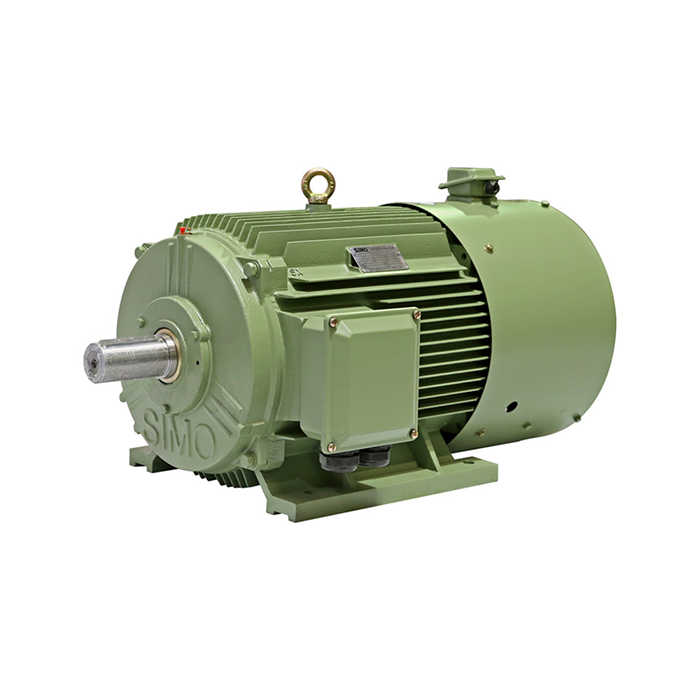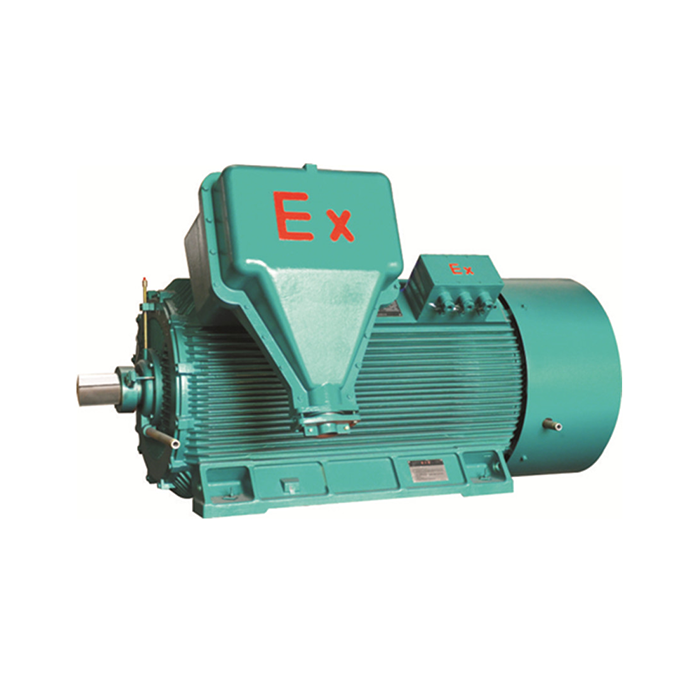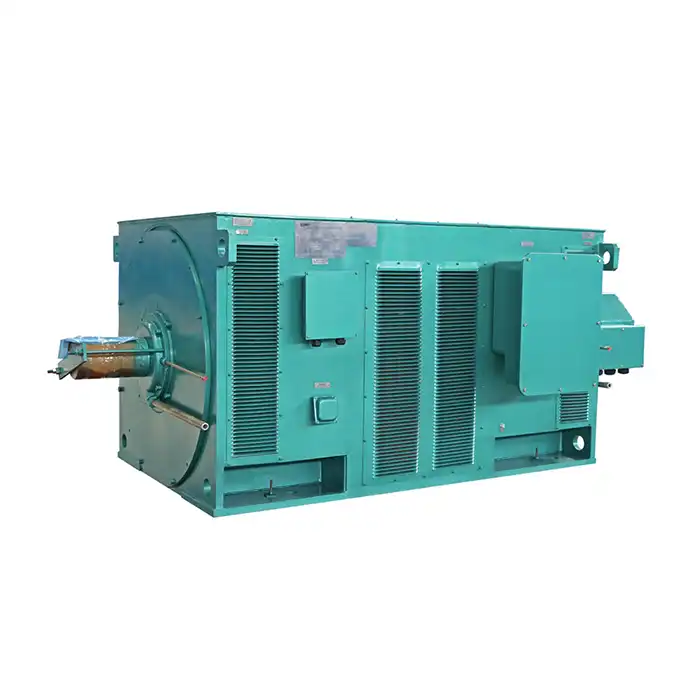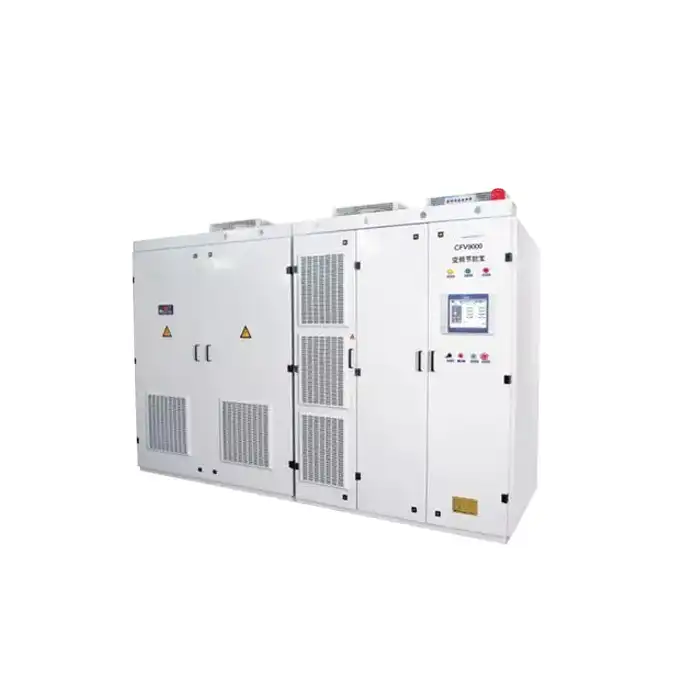When selecting motor solutions for industrial applications, the choice between a vfd duty motor and a standard motor significantly impacts operational efficiency, equipment longevity, and overall performance. VFD duty motors feature specialized insulation systems and enhanced cooling mechanisms designed specifically for variable frequency drive applications, while standard motors operate optimally at fixed speeds with direct line power. This fundamental difference affects everything from energy consumption to maintenance requirements, making the selection crucial for manufacturing facilities, HVAC systems, and automation equipment across diverse industrial sectors.

Series:YVFE5
Frequency conversion range:30hz~50hz,5hz~70hz,5hz~100hz
Power range:0.75-1000kW
Protection level:IP55
Application:are suitable for driving various mechanical equipment that require continuous and frequent forward and reverse rotation, such as steel rolling, lifting, transportation, machine tools, printing and dyeing, papermaking, chemicals, textiles, pharmaceuticals, etc., and can be used with various domestic and foreign variable frequency power supplies.
Advantage:high efficiency, wide speed range, high precision, stable operation, and easy operation and maintenance.
Certificate:installation dimensions comply with International Electrotechnical Commission (IEC) standards.
Others: SKF, NSK, FAG bearings can be replaced according to customer requirements.
Understanding VFD Duty Motors and Their Core Technology
VFD duty motors represent a specialized category of electric motors engineered to withstand the unique electrical stresses associated with variable frequency drives. These motors incorporate enhanced insulation systems capable of handling voltage spikes and harmonic distortion generated by inverter-driven power supplies.
The construction features three primary enhancements over conventional designs:
- Reinforced Insulation Systems: Class F or Class H insulation materials protect against voltage reflections and switching transients
- Optimized Cooling Design: Enhanced ventilation systems maintain optimal operating temperatures across variable speed ranges
- Bearing Protection: Specialized bearing systems prevent electrical discharge machining caused by shaft voltages
Test data from industrial applications shows VFD duty motors maintain insulation integrity over 20,000 hours of operation under inverter control, compared to 8,000-12,000 hours for standard motors in similar conditions. The enhanced cooling systems enable operation at speeds as low as 10% of rated speed while maintaining acceptable temperature levels.
If you need precise speed control for process automation or frequent start-stop cycles, then VFD duty motors provide superior reliability and extended service life compared to standard alternatives.
Standard Motor Characteristics and Traditional Applications
Standard motors, also known as constant speed motors, operate directly from utility power without frequency conversion. These induction motors excel in applications requiring consistent rotational speed and straightforward control mechanisms.
Key characteristics include:
- Simple Construction: Basic insulation systems adequate for sinusoidal voltage waveforms
- Cost-Effective Design: Lower manufacturing costs due to standard materials and construction methods
- Proven Reliability: Decades of field experience in fixed-speed applications
Performance data indicates standard motors achieve 95-97% efficiency at rated load and speed conditions. These motors typically operate for 15,000-25,000 hours in constant speed applications without major maintenance requirements.
If you need reliable operation for conveyor systems, pumps, or fans operating at constant speeds, then standard motors offer excellent value and proven performance characteristics.
Performance Comparison: Efficiency and Power Characteristics
VFD Duty Motor Performance
VFD (Variable Frequency Drive) duty motors offer distinct advantages over standard motors, especially when considering their ability to perform under varying load conditions. One of the key strengths of VFD duty motors is their adaptability across a wide range of speeds. Laboratory tests have demonstrated that VFD duty motors maintain stable operation down to 20% of their rated speed while still delivering consistent torque output. This makes them highly suitable for applications that require precise speed control or operate under fluctuating load demands.
Unlike standard motors, which experience significant efficiency losses and torque reduction when operated below their rated speed, VFD duty motors excel in low-speed operation without sacrificing performance.
Additionally, VFD systems allow for soft starting, reducing mechanical stress on connected equipment by 70-80% compared to traditional direct-on-line starting methods used with standard motors. This soft start capability helps in prolonging the lifespan of both the motor and the machinery it drives.
Standard Motor Performance
Standard motors, on the other hand, are optimized for stable operation under rated conditions, meaning they perform best when running at or near their designed speed and load parameters. When subjected to variable speeds or external control methods, such as those used in process control or load matching, standard motors face considerable performance challenges. At speeds below 90% of the rated value, they experience substantial reductions in torque and efficiency. These limitations make standard motors less suitable for applications that demand continuous speed variation or flexible load matching.
While standard motors are generally simpler and less expensive, their lack of versatility in speed control can hinder their performance in dynamic environments. In such cases, VFD duty motors are the better choice due to their ability to maintain consistent operation across a broad spectrum of operational conditions, ensuring optimal efficiency and reducing wear and tear on the equipment.
Installation and Maintenance Considerations
Installation requirements differ significantly between motor types, affecting initial setup costs and ongoing maintenance protocols. VFD duty motors require integration with drive systems and proper cable selection, while standard motors need appropriate starting equipment and protection devices.
VFD duty motor installations require:
- Shielded Cabling: Special motor cables prevent electromagnetic interference and reduce bearing currents
- Proper Grounding: Enhanced grounding systems eliminate shaft voltage buildup
- Environmental Controls: Climate-controlled enclosures protect sensitive drive electronics
Standard motor installations involve:
- Starting Equipment: Contactors, overload relays, and disconnect switches
- Standard Wiring: Conventional three-phase power cables without special shielding requirements
- Basic Protection: Thermal overload protection and short circuit protection
Maintenance data shows VFD duty motors require bearing replacement every 30,000-40,000 hours when properly installed, while standard motors typically need bearing service every 20,000-30,000 hours due to starting stress cycles.
If you need minimal maintenance requirements and extended service intervals, then VFD duty motors with proper installation provide longer operational periods between service events.
Cost Analysis and Economic Impact
Economic evaluation encompasses initial investment, operational costs, and lifecycle expenses. VFD duty motors command higher upfront costs but deliver operational savings through precise speed control and reduced energy consumption.
Initial cost breakdown shows VFD duty motors typically cost 15-25% more than equivalent standard motors. However, the complete system cost including drive equipment varies significantly based on application requirements and control complexity.
Operational cost analysis reveals:
- Energy Consumption: Variable speed operation reduces energy usage by 20-50% in variable torque applications
- Maintenance Costs: Soft starting reduces mechanical wear, extending equipment life by 25-35%
- Process Efficiency: Precise speed control improves product quality and reduces waste in manufacturing processes
Return on investment calculations indicate payback periods of 12-24 months for VFD systems in applications with significant load variation or frequent speed changes.
If you need cost-effective solutions for applications with varying load demands, then VFD duty motors provide substantial long-term economic benefits despite higher initial investment.
Application-Specific Selection Guidelines
Proper motor selection depends on specific application requirements, operational patterns, and performance expectations. Different industrial sectors benefit from tailored approaches based on their unique operational characteristics.
Manufacturing and Process Control Applications:
Automotive assembly lines, food processing equipment, and pharmaceutical manufacturing require precise speed control and frequent operational changes. VFD duty motors excel in these environments, providing smooth acceleration, accurate positioning, and consistent product quality.
HVAC and Building Systems:
Commercial air handling units, chilled water pumps, and cooling tower fans benefit from variable speed operation to match building load requirements. Energy savings of 30-40% are common when replacing constant speed systems with VFD-controlled equipment.
Water Treatment and Utilities:
Municipal water systems, wastewater treatment plants, and distribution networks utilize variable speed pumping to maintain system pressure and optimize energy consumption. VFD duty motors enable automated control systems to respond to demand variations.
If you need reliable operation in demanding industrial environments with variable load conditions, then VFD duty motors provide the durability and performance characteristics required for critical applications.
Conclusion
The selection between VFD duty motors and standard motors significantly impacts operational efficiency, maintenance requirements, and long-term costs across industrial applications. VFD duty motors excel in variable speed applications requiring precise control, offering enhanced insulation systems, optimized cooling designs, and superior reliability under demanding electrical conditions. Standard motors remain ideal for constant speed applications where simplicity and proven performance take precedence over speed variability.
Understanding application-specific requirements, operational patterns, and economic considerations guides proper motor selection. Industries requiring process automation, energy optimization, or frequent speed changes benefit substantially from VFD duty motor technology, while fixed-speed applications often achieve optimal results with standard motor solutions.
XCMOTOR VFD Duty Motor Solutions: Advanced Technology for Industrial Excellence
Industrial facilities seeking reliable vfd duty motor supplier partnerships can benefit from XCMOTOR's comprehensive motor solutions designed for demanding applications. Our specialized motor designs incorporate advanced insulation systems, optimized cooling technology, and enhanced bearing protection to ensure superior performance in variable frequency drive applications.
Whether your facility requires motors for precision manufacturing equipment, HVAC systems, or critical process control applications, XCMOTOR provides tailored solutions backed by technical expertise and reliable support. Our experienced engineers work directly with customers to specify optimal motor configurations for specific operational requirements.
Ready to enhance your industrial operations with premium VFD duty motor technology? Contact our technical specialists to discuss your specific application requirements and discover how XCMOTOR's advanced motor solutions can improve your facility's performance and reliability. Reach out to our team at xcmotors@163.com for detailed technical specifications and customized recommendations.
References
- IEEE Standard 841-2009: IEEE Standard for Petroleum and Chemical Industry - Premium Efficiency Severe Duty Totally Enclosed Fan-Cooled (TEFC) Squirrel Cage Induction Motors
- NEMA MG1-2016: Motors and Generators Standard - Part 31, Definite Purpose Motor Applications
- IEC 60034-25:2014: Rotating Electrical Machines - Guide for the Design and Performance of AC Motors Specifically Designed for Converter Supply
- ANSI/IEEE 519-2014: IEEE Recommended Practice and Requirements for Harmonic Control in Electric Power Systems
- EASA Technical Manual: Best Practices for Installation and Maintenance of VFD-Fed Motors, Electrical Apparatus Service Association
- DOE Advanced Manufacturing Office: Premium Efficiency Motor Selection and Application Guide for Industrial Facilities











